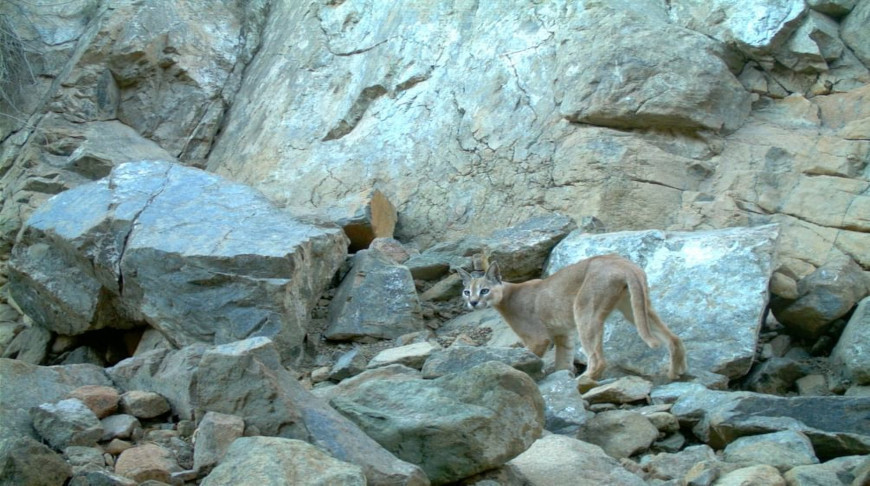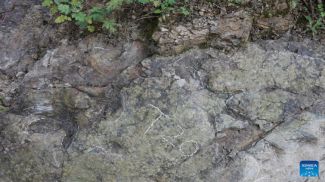
FUJAIRAH, 7 October (BelTA - Emirates News Agency) - The Arabian Lynx
(Lynx caracal schmitzi), classified as Critically Endangered on the
UAE's National Red List, has been documented within the Wadi Wurayah
National Park after an extended absence. This sighting represents a
significant milestone for the ongoing national biodiversity and nature
conservation initiatives.
The animal was captured on motion-sensor cameras as part of the ‘Notice Nature’ initiative, supported by Mashreq Bank in collaboration with Fujairah Environment Authority and Emirates Nature-WWF. Each confirmed sighting provides vital data to assess the species’ status, safeguard its fragile habitats, and enhance long-term conservation strategies.
The renewed sighting confirms the continued presence of this rare predator in its natural environment, reflecting the impact of conservation programmes and the success of protected areas. The species was last recorded in Jebel Hafeet in 2019, near Wadi Shees in March 2023, and now in Wadi Wurayah in 2025 - offering renewed hope for its survival.
Known for its muscular build and distinctive black ear tufts, the Arabian lynx plays a crucial role in maintaining the ecological balance of mountain ecosystems. Although native to the mountains and deserts of the UAE and the Arabian Peninsula, it is an elusive and mainly nocturnal species, rarely seen in the wild.
Motion-sensor cameras installed in the reserve, operated in partnership with Fujairah Environment Authority and volunteers from Emirates Nature’s Leaders of Change programme, captured the images automatically by day and night using infrared technology. The discovery adds to the park’s record of rare wildlife, including the seldom-seen Blanford’s fox.
Dr Ali Hassan Al Hammoudi, Director of Biodiversity and Natural Resources at the Fujairah Environment Authority, said the lynx’s reappearance coincides with World Habitat Day, underscoring the reserve’s role as a safe haven for endangered species. He highlighted the Authority’s collaboration with Emirates Nature-WWF to protect and monitor this unique landscape through long-term scientific programmes.
Dr Andrew Gardner, Associate Director of Biodiversity Conservation at Emirates Nature-WWF, described the sighting as a rare and urgent call to action, noting that while documentation offers hope, sustained efforts are essential to secure the lynx’s future.
The animal was captured on motion-sensor cameras as part of the ‘Notice Nature’ initiative, supported by Mashreq Bank in collaboration with Fujairah Environment Authority and Emirates Nature-WWF. Each confirmed sighting provides vital data to assess the species’ status, safeguard its fragile habitats, and enhance long-term conservation strategies.
The renewed sighting confirms the continued presence of this rare predator in its natural environment, reflecting the impact of conservation programmes and the success of protected areas. The species was last recorded in Jebel Hafeet in 2019, near Wadi Shees in March 2023, and now in Wadi Wurayah in 2025 - offering renewed hope for its survival.
Known for its muscular build and distinctive black ear tufts, the Arabian lynx plays a crucial role in maintaining the ecological balance of mountain ecosystems. Although native to the mountains and deserts of the UAE and the Arabian Peninsula, it is an elusive and mainly nocturnal species, rarely seen in the wild.
Motion-sensor cameras installed in the reserve, operated in partnership with Fujairah Environment Authority and volunteers from Emirates Nature’s Leaders of Change programme, captured the images automatically by day and night using infrared technology. The discovery adds to the park’s record of rare wildlife, including the seldom-seen Blanford’s fox.
Dr Ali Hassan Al Hammoudi, Director of Biodiversity and Natural Resources at the Fujairah Environment Authority, said the lynx’s reappearance coincides with World Habitat Day, underscoring the reserve’s role as a safe haven for endangered species. He highlighted the Authority’s collaboration with Emirates Nature-WWF to protect and monitor this unique landscape through long-term scientific programmes.
Dr Andrew Gardner, Associate Director of Biodiversity Conservation at Emirates Nature-WWF, described the sighting as a rare and urgent call to action, noting that while documentation offers hope, sustained efforts are essential to secure the lynx’s future.













